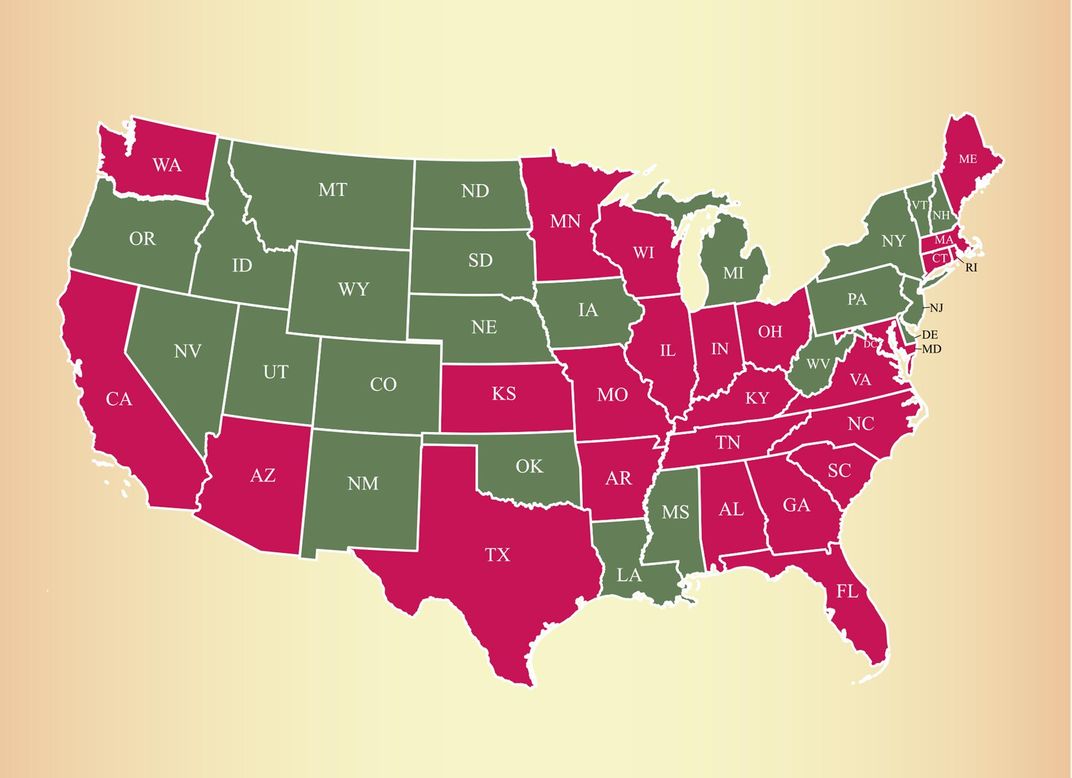Lice That Can Resist Drugs Have Infested Half the States in the U.S.
Mutated pests that can survive common drugstore treatments have been found in at least 25 states so far
/https://tf-cmsv2-smithsonianmag-media.s3.amazonaws.com/filer/d9/cb/d9cbd3c2-aab3-4d11-b9ca-2a25c6c5d930/istock_000007763269_medium.jpg)
Head lice season has begun—the time of year when millions of creepy, crawly itchy bugs take up residence in kids’ scalps. A parent's immediate reaction to a lice epidemic might be to head to the drugstore for a fine-tooth comb and an over-the-counter remedy. But one biologist begs you to reconsider.
Kyong Sup Yoon at Southern Illinois University Edwardsville has devoted much of his career to figuring out how to tackle the lice infestation that’s been picking up steam in the U.S. in recent years. According to his preliminary numbers, at least 25 states play host to lice that are resistant to commonly available over-the-counter treatments.
The trouble is widespread use of pyrethroids, a family of insecticides used to kill indoor and outdoor pests from mosquitoes to bed bugs. The more often insects get exposed to these compounds, the greater the chances some will mutate and develop resistance to the drugs, then go on to pass that resistance to their offspring. In fact, says Yoon, it's hard to come by lice that lack pyrethroid resistance these days.
“Do the math,” says Yoon: Just one louse that manages to survive a pyrethroid treatment can live for up to a month and lay five eggs a day. “Multiply that by an elementary school, a community, and soon you’ve got plenty of resistant lice.”
Lice prevention is nothing new. Archaeologists have found evidence of lice combs at pre-Columbian sites in Chile, and U.S. pioneers made lice combs out of bone in the early 19th century. A 1916 medical journal even recommends dousing the head in “gasoline, or kerosene and vinegar, equal parts” to get rid of head lice.
To collect the thousands of modern lice needed for his research, Yoon turned to the professionals. With the help of expert Katie Shepherd, who trains people in the art and science of lice removal, Yoon created a nationwide network of volunteer pickers, who use combs and ethanol-filled vials to collect samples and record demographic information. Yoon and his team then study the lice in the lab to look for drug-resistant mutations.
While Yoon’s team has confirmed resistance in only 25 states, they believe the reality is likely much worse, as they report in a paper presented today at the 250th National Meeting & Exposition of the American Chemical Society. In 104 out of 109 lice populations already analyzed, they found high levels of gene mutations that make lice indifferent to drugstore treatments. The team is still analyzing data from the other 25 states.

“Parents who go to the drugstore to treat lice are part of the problem,” cautions Yoon. Overuse—and occasional misuse—of the same drug type only ups the odds that resistant bugs will develop and thrive. “Resistant genes are oversaturated in this nation.”
He acknowledges that newer, non-pyrethroid treatments are more expensive and more difficult to obtain; parents can only purchase them with a prescription from lice pros and dermatologists. But he adds that while body lice act as a disease vector, head lice do not. Getting them probably won’t give a kid much more than a case of the itchies and a day off of school, so it's worth it to take the time to seek prescription treatments. At the same time, we need to make sure our best weapons stay effective. Even now, Yoon’s colleagues are exploring ways to improve access to newer lice treatments without watering down their efficacy over time.
Next, Yoon and his team will focus on whether drug-resistant lice in the United States have also developed metabolic changes that can make future outbreaks even harder to control. He won’t be surprised if those changes are already well underway. After all, says Yoon, when humans overuse head lice remedies, they contribute to real change in the bugs' genes—no matter how good our itchy intentions.
/https://tf-cmsv2-smithsonianmag-media.s3.amazonaws.com/accounts/headshot/erin.png)
/https://tf-cmsv2-smithsonianmag-media.s3.amazonaws.com/accounts/headshot/erin.png)